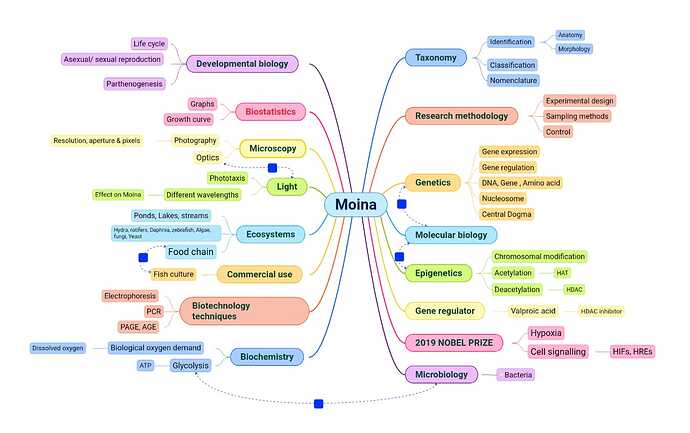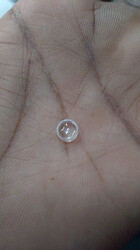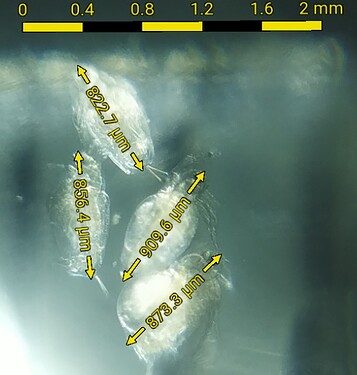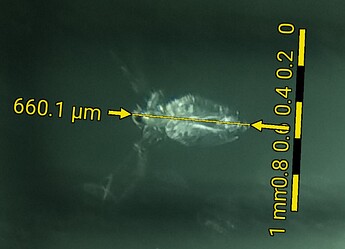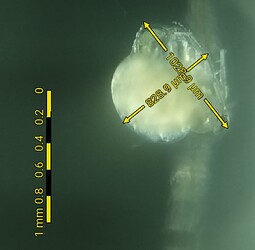Yes we can!
In the earlier posts, photos/videos of Moina with a ruler (scale) beside have been posted.
Moina Model Concept Map made with the collaboration of CUBists from all over India during the CUBE STEM National Meet (Virtual) 2020
CUBE Nerul HomeLab
Moina macrocopa JSK1 Model System
Breaking News
Two bottles full of Moina!
Research Question: Why do Moina undergo a colour change when subjected to low oxygen conditions?
Long-term objective: To study the effect of histone deacetylases-inhibitor Valproic Acid on the colour of Moina due to Haemoglobin protein.
Objective: To culture and maintain Moina in the HomeLab.
https://drive.google.com/file/d/1TaTXfFOMR-vGGNvF4z3zk_uE9-fPbb_n/view?usp=sharing
The above video shows ~150 colourless Moina in two of the culture bottles L4 and L5.
Currently, there are five culture bottles L1 to L5 having 250mL of dechlorinated water, 1 drop of milk is added daily and 5 Moina were added initially.
L1 to L3 made on 1st Jan 2021 and L4, L5 were made on 12th Jan 2021.
Date of Video: 19th Jan 2021
Place: Nerul, Navi Mumbai, MH
Taken by: Drishtant MK
Achievement so far: I alongwith my collaborator CUBists have successfully cultured/been culturing Moina since the lockdown started i.e. for almost 300+ days now!
Our CUBists @manmasih @Manjuel, @Rechel_tirkey @Ram (from Ranchi, JH) and Abhijith Vinod (from Kolenchery, Kerala) have been culturing Moina in their HomeLabs even before the start of lockdown!
Let us continue this stint for the time to come!
First step would be updates… followed by discussion.
Looking forward to hear from you alongwith updates
@Zahra_R17 @saida786110 @saswathy679 @arunimakunju99
@drishtantmkawale Thank you for narrating all the experiments and results in such an amazing fashion. It is really very exciting and interesting. 

CUBE Nerul Homelab
Moina Model System
Breaking News
Moina fit and fine all throughout an ~3000kms journey down-south!
Courtesy: Google Maps
Above is the map of my 15day journey wherein I took alongwith me the model organism Moina macrocopa JSK1 and was successful in maintaining them throughout with fewer hiccups wrt. culturing, etc. and the journey involved shifting my Nerul homelab to temporary Car and Train homelabs too!
Two 500mL bottles having 250mL of DC water + ~30 Moina each were taken along out of which Moina survived in only one of the bottles. Their feeding pattern wasn’t fixed as a result of which 1drop of milk was added just four times in 15days.
When I returned back, ~30 Moina were remaining in the bottle (that was taken along) out of which I made two new bottle cultures.
Video
And here I am updating after quite sometime😅
Above is a video showing movement of Moina alongwith alot of Rotifers accompanying them in the 250mL DC water and are fed with 1drop of milk on alternate days.
Date: 8th April 2021, Thursday
Place: Nerul, Navi Mumbai
Video by: Drishtant MK
Interesting CUBE Chat here! Good record of all your observations!
How do we calculate the size of an organism or anything that we observe under a microscope?
Context2Curriculum! Moina model system or any other model system → connected to microscopy.
All the collaborative stuff here! ![]()
I’ll share my experience of calculating the size of Moina. I bought a laser light (red-coloured one used in presentations, etc.) and took the lens (convex) out of it.
This one
Steps
i) I attached this lens to the rear camera of my mobile phone (via a stick tape).
ii) Further, I harvested Moina out of my stock culture through a dropper and placed a few of them on a glass slide.
iii) Held a light source (another phone’s torchlight) below the glass slide.
iv) Simultaneously, I also placed a ruler scale under the glass slide as a reference scale.
v) Click! ![]()
Took a photo from above by doing the required adjustments. No digital zooming was done.
Well, this is not it ![]() . We’ll have to process the image to measure the approximate length/size of the organism.
. We’ll have to process the image to measure the approximate length/size of the organism.
That can be done by using the ImageMeter application for mobile phones.
Here’s the link to a video that will introduce you to the app.
Results
Fig.1 All of them from the same mother, of the same age but of varying lengths. This shows that Moina too, show polymorphisms (variations).
Fig.2 A 36hour-old (young
Fig.3 A gravid one
The pictures may not be resolute and clear but I am improving upon that.
All of it will be possible when collaborators will try it out in their homelabs and give feedback whether it worked out there.
Rest, I think this inexpensive jugaad can be used for every model system in CUBE provided that a reference scale and a bit of meticulousness is maintained while doing it.
What do you say? @Lydia
This is great!
Maybe, you can share a ray diagram kind of to show how the whole setup looks.
What we can also do is, we can share this with our collaborators and they too can follow this. We need to get reproducible results with the help of our collaborators. The size of different model systems can be measured using this method.
I’m not sure if everyone has a laser light lens in their house. Is there by any chance, an alternative for this one component?
Yes agreed!
There is an alternative, but its an expensive one ![]()
Some YT videos suggest the lens CD-DVD reader (the centrepiece in the picture below)

One can use the above lens if they have a damaged DVD player.
Apart from this, I’ll prefer that you should look for this laserlight lens which cost me Rs.60 (after alot of bargain. Eventually I was going to break it ![]() ).
).
Less than a $ it’ll cost us’all!
@ravi312 had come up with this interesting thread. Do give a visit ![]()
Yes, this is surely an alternative, but only if it’s a damaged one. Otherwise, definitely not a new, and expensive one.
A cheaper alternative is preferred or something that we already have in our house
DP is into plotting.
Hi i am sakshi beloshe from N.E.S ratnam college i am also maintaining moina culture as a feed for hydra.
The question was why can’t we use that curd to feed moina because it also contains bacteria or you can say more bacteria than milk???
So why milk??? Why not curd??
Hello sakshi!
It’s a good question. So when we discuss about culturing Moina in Homelab or college lab it is easier to convey it to people that you can culture it with milk. Every household has milk. So mostly we say milk. You can also used curd but make sure you only use the water of the curd and not the lumps otherwise those lumps will settle down and you have frequently clean your culture. Even i used curd water when I don’t have milk someday.
So you can try and let us know if you how it worked!!
